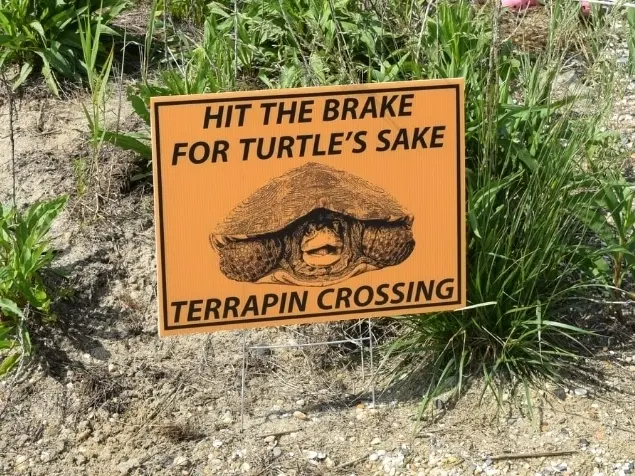
Stay Safe and Be Wildlife Aware
Always prioritize your personal safety. Before stopping to assist an animal, stay alert for approaching vehicles, use proper signals when pulling over, and assess your surroundings carefully.
Use Caution When Assisting Animals
When interacting with wildlife, proceed with care. Injured or frightened animals may act defensively and could bite depending on the species. In many cases—especially with protected species—it’s best to simply ensure the animal has a safe path to continue crossing on its own.
If Relocation is Required
Only move the animal if absolutely necessary. Always relocate it in the direction it was originally heading and place it safely on the opposite side of the road. For turtles, consider using a car floor mat or similar object to gently guide or slide them across, minimizing direct handling.
Handling Tips for Turtles
Never lift a turtle by its tail—it can cause injury and provoke defensive behavior. For snapping turtles, we recommend you DO NOT try to move them. If absolutely unavoidable, do not pick up by the sides of the shell where their long necks can reach. If necessary, carefully grasp the rear of the shell or use a car mat to encourage movement.
Do Not Relocate the Animal Elsewhere
Do not take the animal with you. Your goal should be to help it safely continue its natural journey—not to relocate it to a different environment.
Know the Laws and Get Involved
Familiarize yourself with local wildlife regulations. Contact your State or Territorial Fish and Wildlife Office to understand what actions are permitted and to explore opportunities to support conservation. You can also reach out to your nearest National Wildlife Refuge for education on native species and local preservation efforts.